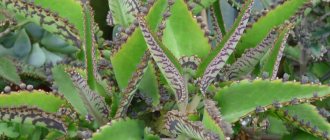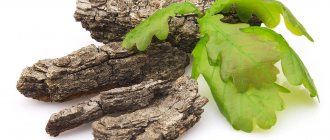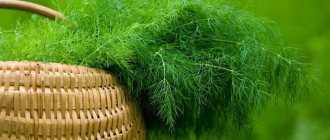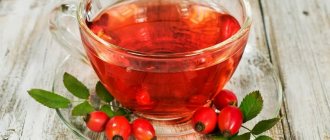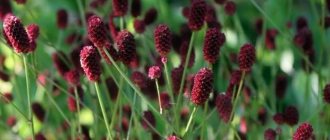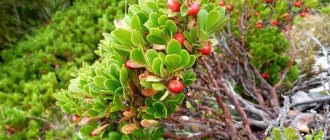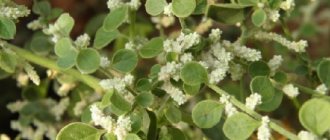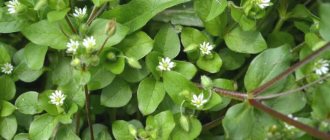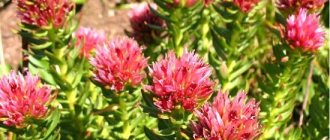Marsh wild rosemary (marsh rosemary, hemlock, forest rosemary, swamp stupor) is a perennial plant from the Ericaceae family, which has a special appearance and smell. People who are far from botany, who at least once see this plant, touch the specific leaves and smell it, will remember the puzzle for the rest of their lives and will no longer confuse it with another culture. It is poisonous and therefore requires care when collecting and preparing, as well as strict dosing when used for therapeutic purposes.
Holarctic species, mycotroph. It is characterized by a large range in Russia: it grows in the tundra, the European part, Siberia and the Far East. Grows in Ukraine, Belarus (especially in Polesie, where there are many swamps). Found in Alaska and Canada.
A typical place to see the plant is a moss bog, peat bog or swampy coniferous forest. Very often forms thickets, dominating other vegetation. A frequent “neighbor” of swamp stupor is blueberry, a useful and rare berry.
Today, the medicinal properties and contraindications of wild rosemary have been well studied, which makes it possible to use it in official and folk medicine, but strictly according to indications.
Morphological description
The evergreen swampweed is a shrub that reaches a height of 50-60 cm, sometimes it can grow more than 1 meter. The roots can grow to a depth of 30-40 cm. The shrub is erect: the stems are recumbent, rooting, and have a large number of ascending branches. The shoots are rusty tomentose. Old branches have bare bark of a grayish-brown color without edges.
The leaves are on short petioles, alternate, linear or oblong-elliptical in shape. Leaf length – 0.7-4 cm, width – 2-10 mm. The edge is slightly pointed or blunt. The leaves are quite dense, leathery, wrinkled, shiny with small glands on top and brown-felt underneath. The edge is solid, slightly turned downwards. Petioles are short.
The flowers are located on thin glandular stalks and reach a diameter of 8-10 mm. The color is white, sometimes reddish, the smell is strong, sometimes stupefying. Collected into shields or umbrella brushes of 16-25 pieces. The corolla is white, consists of 5 free elliptical petals and has a length of 5-7 mm. The calyx has 5 rounded teeth, small, remaining with the fruit. The sepals are brownish-pubescent, sticky, have a rounded shape with a ciliated edge. The stamens exceed the corolla in length (10 pieces). The filaments are expanded and pubescent at the base. The anthers open with holes. The pistil has an upper, five-locular ovary. The style is single, filiform, small, and has a five-lobed stigma. There is a nectar disc around the ovary.
Flowering occurs in May-July, and fruit ripening occurs in July-August. The fruit has a length of 3-8 mm and has the appearance of an oblong multi-seeded elliptical five-locular capsule, glandular. At the top there is a column. The stalks are long and curved downwards. When ripe, the box splits upward along the flaps. The seeds, approximately 1.5 mm long, are fusiform, small, flat, light yellow in color with wing-like membranous appendages at the ends. Propagated vegetatively and by seeds.
Tips for care and reproduction
Experienced gardeners living in places where wild rosemary grows give the following recommendations:
- The plant is unpretentious to lighting, it will grow even in a shady place and will not die, only the flowers will be slightly smaller.
- The easiest way to propagate is by dividing the bush.
- Abundant watering is necessary only in severe drought.
- You should not grow wild rosemary in small front gardens or near apiaries. Honey collected from the flowers of the plant can cause poisoning.
When planting creeping wild rosemary, no care is required. It grows on rocky slopes and reproduces well by seeds.
Chemical composition
All parts, except the root system, contain a lot of essential oil, which determines the specific smell. The oil contains sesquiterpene alcohols (up to 70%). The most significant are iceol, which can be used to obtain guaiazulene, as well as cymene, palustrol, and geranyl acetate. These alcohols have a balsamic odor and a bitter-burning taste, and are characterized by a pronounced expectorant and relaxing effect.
The highest content of essential oil is determined in first-year leaves (1.5-7.5%) and 2nd-year leaves (0.25-1.4%), flowers (2.3%). The branches of the second year contain up to 1.5% oil, and the branches and fruits contain about 0.2%.
The above-ground parts also contain:
- flavonoids . Substances of this group improve vascular tone, reduce the permeability of the vascular wall, and have a healing effect on the blood supply system, including small vessels;
- tannins . They have an astringent effect and help stop bleeding;
- arbutin . Glycoside with an antiseptic effect. Quickly and effectively suppresses the growth of pathogenic flora. It is considered the most effective against Staphylococcus aureus;
- neomertillin . A glycoside that has an insulin-like effect.
Various minerals, amino acids, vitamins, organic acids, and enzymes are found in small quantities in the plant.
The younger the shoots, the greater the concentration of nutrients observed in them.
Pharmacological properties
Products based on wild rosemary are used in medicine. The culture has expectorant properties and helps relieve inflammation. The herb is successfully used for whooping cough and has an antiseptic effect.
In addition, the substance helps reduce blood pressure. The composition has a stimulating effect on the higher parts of the nervous system. Herbal preparations help remove and thin mucus. The products accelerate the evacuation of this substance, help soften the cough and achieve an antibacterial effect.
The medicinal properties of wild rosemary are associated with the essential oil content in it. When used internally, part of it is released through the mucous membranes of the respiratory organs. When excreted through the bronchi, the biologically active compounds of the herb irritate the mucous membranes and stimulate the functioning of the bronchial glands. They also activate the functions of the ciliated epithelium of the respiratory organs.
Wild rosemary preparations have an antispasmodic effect on the smooth muscles of the bronchi. Thanks to the essential oil content, it is possible to achieve high antimicrobial activity of the product. The composition produces a bactericidal effect and successfully eliminates Staphylococcus aureus.
The plant has diuretic properties and has a disinfectant effect. This is due to the excretion of essential oil in the urine through the kidneys. The substance is excreted unchanged. The glycoside arbutin also has a complex effect on the urinary tract.
The use of wild rosemary provokes unwanted side reactions. These include allergies, dizziness, and excessive excitability of the nervous system. In case of an overdose of the substance, there is a risk of signs of excitement or, conversely, depression of the nervous system.
Scientific research on wild rosemary
The earliest known mentions of the plant date back to the 12th century and are found in Danish herbariums. In Europe, swampweed was introduced into medicinal practice by Swedish doctors. The famous scientist Carl Linnaeus wrote an essay about the healing properties of the plant in 1775.
In folk medicine, this odorous healer has been used since the 16th century, especially in Sweden and Germany, where it was positioned as a remedy for various diseases of internal organs and skin.
It has been used in Russia since the 19th century, but was known to scientists much earlier.
- Thus, in 1496, Rauchfus K. A. was the first to obtain essential oil from the raw material of a plant and described that it consists of a crystalline and liquid part.
- In 1912, academician Krylov A.P. For the first time, the tactics of treating whooping cough with plant preparations was described.
- Later, in 1943, Professor Tatarov A.P. wrote about the rapid effect of wild rosemary on coughs accompanying acute bronchitis and bronchial asthma, which was proven in the treatment of patients during the Second World War.
- In 1945, Dyakov N.N. also described the beneficial properties that made it possible to use the plant for the treatment of bronchial asthma.
- For the first time, the structural formula of tricyclic sesquiterpene alcohol - iceol was proposed by N. P. Kiryalov in 1949. And the discovery of an antiallergic effect and a mild hypertensive effect made it possible to recommend wild rosemary to patients with cough syndrome who suffer from hypertension.
Soviet scientists wrote that even long-term use of swampweed does not cause an addictive effect. Therefore, its drugs can be used for several years, for example, as maintenance therapy for asthma, pulmonary tuberculosis and other chronic pathologies of the bronchopulmonary system in which cough occurs.
At the beginning of the 21st century, under the leadership of Professor Berezovskaya T.P., the first fundamental research of the plant was carried out on the basis of the Siberian Medical University: the pharmacological activity and high resource of bogwort as a biologically active substance were established.
In 2004, an experimental study of the antioxidant properties of an extract extracted from wild rosemary shoots collected in various parts of Russia from 1988 to 2003 was conducted at Tomsk Medical University. The study was conducted on white laboratory mice and found that the plant can be used to prevent the development of free radical processes in the human body, which lead to damage to cellular structures. The studied plant extracts showed pronounced antimutagenic activity, which once again proved the legitimacy of using the medicinal properties of wild rosemary as an antioxidant plant.
Contraindications and side effects
The key danger of using wild rosemary is the content of toxic components. If the dosage of medications is observed, they will not cause harm to the body. However, an excess amount of the substance can provoke the following symptoms:
- weakness and dizziness;
- increased irritability;
- depression of the nervous system.
If the dosage is greatly exceeded, there is even a risk of death. The product is especially dangerous if you are hypersensitive to its components. In such a situation, you will have to refuse treatment with this substance or reduce its use to a minimum.
It is worth considering that prolonged stay in places where swamp grass accumulates is very harmful to health. An increased concentration of essential oils provokes dizziness and headaches.
The herb is prohibited for use by children, pregnant and lactating women. Contraindications also include acute stages of pathologies of internal organs and excessive nervous excitability.
Collection and preparation
The first thing to remember when going to collect swampweed is to be careful. You should wear gloves on your hands and protect your respiratory system with a respirator.
For further medicinal use, annual shoots with leaves and flowers, up to 10 cm long, are collected. The branches are cut off where the leaves begin to grow. Harvesting is done during the flowering period before the fruits are formed. It is believed that the blooming wild rosemary is the richest in chemical composition.
The branches are dried, tied into bundles, in a suspended state. You can dry it both in attics and verandas, and in the open air, but not in the scorching sun. In rainy weather, you can dry it in a dryer at temperatures up to 55°C.
Dries out about 3 times. The finished raw material has a sharp, resinous odor. Store it separately from other plants, out of the reach of children, in iron jars with lids.
Care and reproduction
In nature, wild rosemary grows on poor soils, but in the garden, for rapid growth and abundant flowering, fertilizing is done once a season, in the spring - with mineral fertilizers. During the hot summer months, wild rosemary is watered generously once a week.
After watering, the soil is loosened and mulched with peat. There is no need to prune the plant; only damaged branches are removed. Ledum is resistant to pests and diseases. Under natural conditions, where wild rosemary grows (the plant in the photo), propagation occurs by seeds and root shoots, and at home, cuttings are also used. Cuttings are carried out in the summer. The shoots are cut and soaked for a day in a Heteroauxin solution. Then they are washed and planted in boxes. Roots appear only the next year.
Useful properties and indications
Ledum herb has a number of positive effects:
- bactericidal;
- disinfectant;
- antioxidant;
- tonic;
- antitussive;
- expectorant;
- hypotensive;
- diuretic;
- sweatshop;
- anti-inflammatory;
- antipruritic;
- anti-allergic.
Indications for the use of plant preparations are extensive. The most common of them are:
- laryngitis;
- acute and chronic bronchitis;
- whooping cough;
- pulmonary tuberculosis;
- hypertension;
- spastic enterocolitis;
- acute rhinitis;
- flu;
- diabetes;
- dysentery;
- rheumatic and gouty joint diseases;
- rheumatism;
- deforming arthrosis, polyarthritis;
- eczema, neurodermatitis, scrofulosis, rashes of various origins, lichen, insect bites;
- external bleeding;
- wounds, bruises.
It is most often used as an antitussive: it softens a painful cough, makes it productive, improves the discharge of sputum and its removal from the lower parts of the bronchial tree, relaxes the smooth muscle tissue of the bronchi.
Some unscrupulous traditional healers advise using strong decoctions of the plant to terminate an unwanted pregnancy. However, the opinion of doctors on this matter is categorical: this is unacceptable. Against the background of such stimulation of miscarriage, not only the embryo suffers, but also the mother’s body, which is subjected to severe intoxication, and its consequences may be irreversible.
Essential oil of wild rosemary
This is an effective folk remedy that is often used for respiratory pathologies. It eliminates asthma and bronchitis. The composition can also be used for prophylactic purposes.
Essential oil has a complex effect on the body and helps eliminate inflammation:
- treats cough, clears mucus from the bronchi, stimulating its elimination;
- relaxes smooth muscles and copes with spasms, which helps eliminate cramps;
- relieves inflammation, destroys Koch's bacillus, copes with the flu;
- has a hypotensive effect and promotes vasodilation.
Pharmaceutical preparations with wild rosemary
Official medicine has long paid attention to this poisonous but beneficial plant. In the pharmacy chains of Russia and post-Soviet countries you can buy the following preparations with swampweed:
- Ledin . Tablets based on sesquiterpene alcohol isolated from wild rosemary essential oil. It is used to suppress the cough reflex in case of bronchitis and other pulmonary diseases (acute and chronic), laryngitis, tracheitis.
- Shoots/grass of wild rosemary . Dry herbal raw materials, which are prescribed for bronchopulmonary diseases (acute and chronic), in which cough occurs.
- Ledum-GF . Homeopathic ointment for external use, characterized by analgesic and antipruritic effects. Indicated for pain accompanying joint diseases and itching after insect bites.
- Fitopril . A drug with a complex composition, a natural beta blocker. Used to prevent cardiovascular diseases (stroke, arrhythmia, angina, etc.)
Spreading
Marsh wild rosemary is resistant to frost. In nature, it grows in forests and tundra zones. The plant can be found in swampy coniferous forests, peat bogs, and birch forests. It is also found in river valleys and mountain forest belts. The shrub is able to grow on very poor and waterlogged soils.
Most often the culture is found in the north of the European part of Russia. It can also be seen in the Far East and Siberia. The shrub is widespread in the mountain-forest part of Eastern Altai. The culture is also found in Europe, Japan, and China. Swampwort also grows in North America.
Recipes with wild rosemary
Many proven recipes help millions of people around the world in the treatment of certain pathologies. However, given the toxicity of the plant, you should consult a doctor before deciding on such treatment.
Decoction
Indicated for angina pectoris, tuberculosis, bronchitis, coughs, colds, inflammatory processes in the intestines. 1 tsp dry raw materials, pour 200 ml of water, boil for 1 minute, leave under the lid to steam for 30 minutes. Filter.
Drink 1 tbsp. 3 r/day. after meal.
To treat skin diseases, the broth is evaporated by half and warm vegetable oil is added to it 1:1, and the affected areas are lubricated with this mixture.
Water infusion
Indicated as a diuretic to calm the nervous system, as well as for asthma, tuberculosis, whooping cough, colds and coughs accompanying bronchopulmonary diseases, gout, rheumatism, shortness of breath, diabetes. Due to its high antioxidant and tonic activity, the infusion can be used to wipe aging skin instead of lotion. You can also apply a bandage soaked in the infusion to small wounds to stop bleeding.
For internal use: about 8 g. mix dry raw materials with 400 ml of boiling water and wait 15 minutes, filter. Take 2 tbsp. per day in small portions.
For internal use - cold infusion method, less concentrated infusion: 1 tsp. raw materials pour 400 ml of boiled water (cold), cover and leave for 8-10 hours. Filter. Take three times a day, half a glass.
For external use: 12 gr. dry raw materials, pour boiling water (250 ml) and steam for 20 minutes, strain. Use for arthrosis, eczema, rheumatism for rubbing and compresses.
Infusion (ancient recipe)
Indicated as a diaphoretic, and also helps with rheumatism, gout, weeping eczema, flu, and runny nose. Take 20 gr. dry raw materials and pour 1000 ml of boiling water, place in the oven (temperature ~ 50 C) for 10 hours, strain.
Take 1/3 cup after meals 4 times a day.
Alcohol tincture
Take 1 part of the dry raw material and add 5 parts of alcohol or 40% vodka, leave in a warm place for 24 hours.
Apply externally for rubbing for arthritis, rheumatism, radiculitis, for lotions for gout.
Cold drops
Take 100 ml of vegetable oil and mix with 1 tbsp. dry raw materials, leave in the dark for 3 weeks, shaking the mixture daily. Afterwards, strain and squeeze the raw materials.
Instill 2-3 drops into each nostril at once, and then 1 drop, multiplicity 3-4 times a day.
Rosemary oil (cold method)
Indicated for lubrication for skin diseases (eczema, etc.). Take 2 tbsp. l. dry raw materials pour 4 tbsp. vegetable oil, leave in a warm place for 12 hours, filter.
Rosemary oil (hot method)
Indicated for treating insect bites, wounds, bruises, rubbing for arthritis and radiculitis. Take 3 tbsp. vegetable oil and mix with 3 tbsp. dry raw materials, put in the oven or oven for infusion.
Ointment for joint diseases
Take a ceramic pan and place wild rosemary grass into it in layers, then fat (goose, pork), alternating them until the container is full. Close the lid tightly and cover the edges with dough. Place the pan in the oven at 100°C for 2-3 hours. Strain the finished product and put it in the refrigerator (the ointment takes on a semi-solid form).
Rub the joints 2-3 times a day.
Medicinal preparations with wild rosemary
Tea for colds, coughs, rheumatism, bronchial asthma
Take 20 gr. swamp grass and 10 gr. nettle leaves, pour 1000 ml of boiling water and wait 12 hours.
Take 100 ml 3-4 times a day. When treating whooping cough, drink 1 tsp. up to 5 times a day.
Collection for chronic bronchitis
Take 2 tbsp. oregano, 1 tbsp. nettle leaves and birch buds, 4 tbsp. wild rosemary 2 tbsp. Pour 2 liters of boiling water over the mixture, boil over low heat for 10 minutes, leave for 60 minutes, strain.
Drink a third of a glass 3 times a day. after meal.
Dysentery collection
Take 10 g. swampweed, mixed with 20 gr. marshmallow root and pour 1 liter of boiling water. Wait 1 hour, strain.
Take 1 tbsp. every 2 hours.
Remedy for acute bronchitis
Take 2 tbsp. puzzle, chamomile, coltsfoot, 1 tbsp. birch leaves and oregano, mix. To 2 tbsp. take 500 ml of boiling water and boil for 10 minutes, then leave for another half hour covered.
Take a third of a glass 3 times a day. after meal.
Collection for asthma
Shift: 200 gr. wild rosemary herbs and chamomile flowers, 60 gr. birch buds, 40 gr. ephedra, chop everything. Take 2 tbsp. mixture, add 500 ml of boiling water to it, leave for 6 hours and filter.
Take half a glass warm 3 times a day. before meals.
Collection for dry cough and hard to clear sputum
Take 5 tbsp. wild rosemary, add 10 tbsp. coltsfoot and marshmallow roots. 2 tsp add the mixture to 1 liter of boiling water, leave for 5 minutes on low heat, leave for half an hour.
Take half a glass before meals, 5 times a day.
Collection for hypertension and obesity
Take 3 tbsp. l. motherwort, the same amount of marshweed, add 2 tbsp. l. wild rosemary and 1 tbsp. l. horsetail and buckthorn bark, mix. To 2 tbsp. add 500 ml of boiling water to the plant mixture, boil for 10 minutes and leave for another half hour.
Take a third of a glass after meals, 3 times a day.
Collection for polyarthritis
Take 2 tbsp. wild rosemary, chamomile, string and plantain, add 1 tbsp. lingonberry leaves and juniper berries, mix. 2 tbsp. mix the raw materials with 500 ml of boiling water, leave for 6 hours, strain.
Take half a glass 3 times a day.
Ointment for scabies
Take 150 gr. wild rosemary and 150 gr. white hellebore (roots), add 500 g to the raw materials. pork fat, place in a water bath for 6 hours, strain and cool.
Lubricate the affected and healthy skin adjacent to the tick localization area 2-3 times a day.
Dosage forms
Ledum is included in ointments, tinctures and decoctions. Oil is prepared to treat skin diseases. A combination of different forms of medicines is allowed to achieve the fastest results.
Ointment
The basis of the ointment is animal or vegetable fat. In thick-walled ceramic dishes, fat and dry herbs should be laid out in alternating layers, filling the container almost to the top. Cover with a tight-fitting lid, coat with dough and place in the oven for 3 hours.
Do not remove the lid during cooking: the fat must be melted in an airtight container to absorb the maximum of nutrients.
Strain the finished ointment to get rid of herbal sediment. Can be stored in the refrigerator for 5-6 months. Ledum ointment should be used only externally: rub into the area of the sore joint with massaging movements.
Oil
For cooking you will need vegetable oil. It is best to take unrefined sunflower. Fresh or dry raw materials should be poured halfway into an opaque glass container. Pour in oil until the grass is completely covered. Seal tightly and leave for at least 2 weeks.
Rosemary oil can be used in its pure form or added to an ointment. To treat affected areas of the skin, the oil should be applied evenly and rubbed in in a circular motion until completely absorbed. The shelf life of the oil is 2-3 months.
Tincture
Tinctures come in two types: for internal and external use. In the first case, for 1 tbsp. boiling water you need to take 1 tbsp. a spoonful of herbs. Taking a large amount of decoction at one time can cause poisoning. Divide a glass of tincture into 4-5 doses and drink them after meals.
Tinctures for external use should only be used as compresses. A popular tincture of wild rosemary with vinegar according to Bolotov. It's quick and easy to prepare:
- 4 tbsp. spoons of dry crushed grass pour 0.5 liters. 9% vinegar.
- Leave for 3 days.
- For polyarthritis and arthritis, wipe the sore spots (the tincture is strong - don’t get burned).
Decoction
The easiest way to use a medicinal plant is to prepare a decoction of wild rosemary. For 1 cup of boiling water you will need 1 tbsp. spoon of dry herb or 0.5 tbsp. spoons fresh. The main difference between a decoction and a tincture is that the former is not stored in the refrigerator, but is drunk immediately after preparation.
When treating colds, 1 glass of decoction should be consumed during the day, divided into 3-4 servings. The effect of the decoction can be enhanced by adding coltsfoot to it. Take in a 1:1 ratio, pour a glass of boiling water, strain and drink throughout the day.
Other uses of the plant
- In everyday life, dry leaves can be used as a natural insecticide, fumigating rooms with them or spraying the decoction in places where flies, mosquitoes, bedbugs, and cockroaches accumulate.
- Powder from the plant or dry twigs help get rid of moths: they are used to arrange clothes or hang bunches in the closet.
- Essential oil mixed with tar is used for tanning leather, in perfumery, textile industry, and soap making.
- Previously, they tried to use bogwort instead of hops in brewing (counterfeit). However, the drink was too intoxicating, causing delirium, headache and dizziness, abdominal pain, and colic.
- It is a good honey plant, but the honey on it becomes poisonous, so it should not be eaten. Such honey can only be used by bees for the development of the colony. For this reason, it is impossible to collect and eat untested honey from wild bees, since it is not known from what plants it was obtained.
- It is used in veterinary medicine to treat domestic animals: pigs, cows, horses with epidemic diseases, colic, poisoning.
Overdose symptoms and toxic effects
Poisonous plant. Dosage above 0.5 g of dried plants may cause drowsiness. Therefore, it is not recommended for people whose work requires increased attention.
In severe cases, depression of the central nervous system.
There have been cases of poisoning with wild rosemary honey, which is also called “drunken honey.”
A long stay among wild rosemary thickets causes headaches.
Ledum essential oil paralyzes the nervous system.
If you notice mild irritability, dizziness, or excitability, stop taking the medications immediately.
